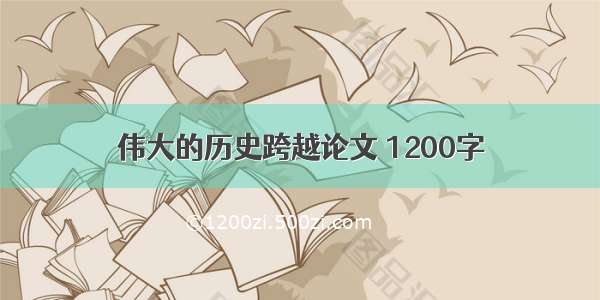
第一课
1.学习解剖与生理学专业术语
重点:
1)经典解剖位置(classic anatomical position)
2)三个解剖面
矢量面(sagittal plane )、冠状面或额状面(coronal or frontal plane)、横切面或水平面(transverse or horizontal plane)
3)方位描述
主体(axial parts)、附属(appendicular parts)
前或腹侧(anterior or ventral)、后或背侧(posterior or dorsal)
上或者颅侧(superior or cranial)、下或者尾侧(inferior or caudal)
内侧(medial)、外侧(lateral)
近端(proximl)、远端(distal)
2.描述下图牙签卡住的位置
along the medial line, ( ) to the heart, but ( ) to the vertebrae, ( ) to the collarbone(锁骨), but ( ) to the stomach.
第一课
I’d like you to take a second and really look at yourself. I don’t mean take stock ofyour life, which really isn’t any of my business. But i mean just look at your body. Hold up your hand. Wiggle it around. Take a sip of water. Hold your breath. Sniff the air. These things are so simple for most of us, that we don’t give them a moment’s thought. But each one of this things is oh so much more complex than it feels. Every movement you make, every new day that you live to see , is the result of a collection of systems working together to function properly. And in short, you, my friend, are a magnificent beast. You are more convolutedand prolific and polymorphously awesome than you probably even dare to think. For instance, did you know that, If they were all stretched out, your intestines would be about as long as a three- story building’s tall? Or that by the time you reach old age, you’ll have produced enough salivato fill more than one swimming pool? Or that you lose about two-thirds of kilogram every year in dead skin cells? And you will lose more than 50 kilograms of them in your lifetime. Just tiny, dired-up pieces of you, drifting around your house and setting on your bookshelves, feeding entire colonies of dust mites. You are on your little world. And i’m here to help you get to know that world, the body that you call a home, through the two disciplines ofanatomy, the study of the structure and relationship between body parts, and physiology, the science of how those parts come together to function and keep that body alive.Anatomy is all about what your body is, physiology is about what it does, together they comprise the science of us.
我希望你花几秒钟,好好看看你自己。我并不是说,评价一下你的生活。这真的不关我的事。我就是指看一看你的身体。动动手指,甩甩胳膊,喝口水,憋一口气,闻闻空气。这些事对我们绝大多数的人来说都太容易了。以至于我们从来没有仔细地想过。但是每一件这样的小事都比我们实际感觉到的要复杂得多。你的每一个动作,你生存下来的每一天都是一系列生理系统相互协作,正常工作的结果。简而言之,我的朋友,你是一个神奇的小野兽。你身体的盘旋扭曲,富饶高产和形态多样,奇妙到你想都不敢想。举个例子,你知道,如果全部展开,你的肠子足足有三层楼那么高;从你出生到进入老年期的时间里,你分泌出的唾液,足够填满不止一个游泳池;你每年丧失的皮肤细胞有2/3kg,而你一生当中,丧失的皮肤细胞超过50kg. 你身上的微小碎片,在你的房间里漂浮着,落在你的书架上,喂饱尘螨。你生活在你自己构成的小世界里,我就是来帮助你认识你的小世界。这个你称为“家”的身体, 通过两个姊妹学科:解剖学研究人类身体各部分的结构和关系,生理学研究身体各部分如何相互协调发挥功能,维持机体生存。解剖学研究身体是什么,生理学研究身体做什么,两者结合就构成了研究我们自身的科学。
It’s a complicated science, i’m not to gonna lie to you and it draws on a lot of other disciplines, like chemistry and even physics. And you’ll have to absorb a lot of new terms, a lots of Latin, gobs of Greek. But this course isn’t just gonna be an inventory of your individual parts, or a diagram about how a slice of pizza gives you energy, because these disciplines are really about why you are alive right now,and how you came to be alive, how disease harms you and how your body recovers from illness and injury. It’s about the big picture stuff that we either have spent most of our time thinking about or trying not to think about death, and sex, and eating, and sleeping, and even the act of thinking itself. All of these behavior we can understand through anatomy and physiology. IF you pay attention and if i do my job well enough, you’ll come out of this course with a richer, more complete understanding not only of how your body works, everything from handshakes to heart attacks, but i think you’ll also start to see that you are really more than just sum sum of your parts.
这是一门复杂的科学,我不打算骗你,这门科学建立在大量其它科学的基础上,比如化学甚至还有物理学。你将学到大量的新术语,大量的拉丁语,希腊语。但这门课不仅仅是盘点一下你的生理结构,或者展示吃一块披萨如何给你能量。因为这门课讲述的是你现在为什么活着?你是如何成为一个生命体的,疾病如何破坏你的身体,以及,生病和受伤之后,你的身体如何康复。这关乎那些最重要的问题。我们一生中大部分时间都在想或者努力不去想死亡、性、吃饭、睡觉,甚至是“想”这个行为本身。所有的这些行为,我们都能通过解剖与生理来理解。如果你肯用心学,如果我讲得足够好,当这门课结束的时候,你将对自己的身体机能(从握手到心脏病发作)有更丰富、更全面的了解,我想,你还会逐渐认识到你自己,真的不只是生理上各个部位的简单相加而已。
We are going to understand the living body by studying a lot of dead ones. And for a long time, we did this mostly in secret. For centuries the dissection of human bodieswas very tabooin many societies, and as a result, the study of anatomy has following a long and slow and often creepy road. The second-century Greek physician Galen gleaned what he could about human form by performing vivisection on pigs. Da vinci pokedaround in dead bodies while sketching his beautiful detailed anatomical drawings until the pope made him stop. It wasn’t until the 17thand 18thcenturies that certified anatomists were allowed to perform tightly regulated human dissections, and they were so popular that they were often public events, with admission fees, attended by the likes of Michelangelo and Rembrandt.The study of human anatomy became such a craze in Europe that grave-robbing became a lucrative, if not legal, occupation...Until 1832, when Britain passed the Anatomy Act which provided students with corpses in the form of executed murderers. Today, students of anatomy and physiology still use educational cadaversto learn, in persnal and hands-on, what’s inside a human body by dissecting them. And it’s totally legal. The cadavers are volunteers which is what people mean when they say they’re “donating their body to science.”
我们将通过研究许多死去的人来了解活着的身体。在很长一段时间里,我们都是秘密进行这些研究的。几个世纪以来,解剖人体在许多社会都是禁忌,因此,解剖学的发展走过了一条非常漫长且鬼鬼祟祟的路。第2世纪的希腊医生盖伦通过对猪进行活体解剖,竭尽所能地收集人类的生理结构。达.芬奇一边捣鼓死尸一边画出了自己精美详细的解剖图,直到教皇勒令他停止。直到17和18世纪,经过认证的解剖学家才被允许进行严格监管的人体解剖,由于解剖学家非常受欢迎,观看需要入场费,以至于人体解剖通常会引起围观的有米开朗琪罗和伦勃朗这样的人。人体解剖学在欧洲引起了一阵狂热,以至于盗墓变成了一个十分赚钱的职业,如果不犯法的话......直到1832年,英国通过了《解剖法》,提供给学生大量被处决的杀人犯的尸体进行学习。今天,解剖与生理课的学生依然使用教学尸体学习,亲身体验,实践操作,通过解剖来认识人体内部都有些什么。并且这完全是合法的,尸体来源于志愿者们也就是那些说过“将自己的躯体捐献给科学”的人们。
So what about these dead bodies shown us? Well, one big idea we see over and over is that the function of a cell or an organ or a whole organism always reflects its form. Blood flows in one direction through your heart, simply because its valves prevent it from flowing backward. In the same way, your bones are strong and hard and this allows them to protect and support all your soft parts. The basic idea, that what a structure can do depends on its specific form, is called the complementarity of structure and function. And it holds true through every level of your body’s organization, from cell to tissue to system. And it begins with the smallest of the small;atoms. You are just a conglomeration of atoms about 7 octillion of them, to be precise. Fortunately for both of us here, we’ve covered the basics of chemistry that every incoming physiology student needs to know in Crash Course Chemistry. So i’ll be referring you there throughout the course when it comes to how things work in atomic level. But the next level up from the chemistry of atoms and molecules includes the smallest units of living things cell. All cells have some basic functions in common, but they also vary widely in size and shape,depending on their function. For example one of the smallest cells in your body is the red blood cell, which measures about 5 micrometers across. Now contrast that with the single motor neuron that runs the length of your leg, from your big toe to the bottom of your spine, about a meter from end to end. Typically, cells group with similar cells to form the next level of organization: tissues, like muscles, membranes and cavity linings nervous, and connective tissues. When two or more tissue types combine, they form organs the heart, liver, lungs, skin, etc.that perform specific functions to keep the body ans work together and combine to get things done, forming organ system. It’s how, like, the liver, stomach, and intestines of your digestive system all unite to take that burrito from plate to pooper. And finally, all those previous levels combine to form the highest level of organization the body itself.
所以,那些已经死亡的躯体给我们展示了什么?我们反反复复思考的一个观点是:一个细胞,器官或者是整个生命体的功能总是反映着它自身的结构。血液总是沿着你心脏的一个方向流动仅仅是因为心脏的阀门(心脏瓣膜)阻止着血液倒着流回来。同样地,你的骨头结实且坚硬,这样它才能保护和支撑所有你身体柔软的部分。基本的观点是一个结构的功能,取决于它特殊的形态。这就叫做“结构与功能的互补性”。它适用于你身体组织构成单位的每一个水平,从细胞到组织到系统。而这一切都开始于最最小的结:原子。你自己就是一大团原子的混合物,确切的说,大约是7×10^9个原子。幸运的是对我们来说,我们已经把所有生理学中需要的化学基础知识在化学速成课中讲过了。所以在整个课程中,当谈到原子水平的问题时我会提醒你去看对应的化学速成课。但下一个水平,除了原子和分子化学,还包括生命体的最小单位—细胞。所有的细胞都有一些共同的基本功能,但它们在大小和形状也有很大的差别,取决于它们各自的功能。你体内最小的细胞之一红细胞,直径大约是5um.和这个对比一下,一根贯穿你整条腿运动神经从你的大脚趾到脊椎的底部从头到尾的总长大约是1米。通常来说,相似的细胞总是聚集在一起形成组织,比如肌肉组织,上皮组织,神经组织和结缔组织。当两种或以上不同类型的组织相结合时形成心脏、肝脏、肺、皮肤等器官。器官承担着特定的功能来维持机体运转。当器官之间相互协调组合来达到共同目的时。就形成了器官系统,这就好比,你消化系统中的肝脏,胃和肠子一同联合起来把墨西哥卷饼从盘子里吃掉,转化成大便。最终,所有之前这些水平组合在一起形成了最高水平的机体结构——你的身体。
Me and you and your dog, we’re all glorious complete organisms, made from the precise organization of trillions of cells in nearly constant activity. This ability of all living systems to maintain stable, internal conditions no matter what changes are occurring outside the body is called homeostasis, and it’s another major unifying theme in anatomy and physiology. Your survival is all about maintaining balance of both materials and energy.You need the right amount of blood, water, nutrients, and oxygen to create and disperse energy, as well as the perfect body temperature, the right blood pressure efficient movement of waste through your body, all that needs to stay balanced. And by your survival depending on it? I mean that everyone’s ultimate cause of death is the extreme and irreversible loss of homeostasis. Organ failure, hypothermia, suffocation, starvation, dehydration they all lead to the same end, by throwing off your internal balances that allow your body to keep processing energy. Take an extreme and sudden case, your arm pops off, if nothing’s done quickly to treat such a severe wound, you would bleed to death, right? But…what does that really mean? What’s gonna happen? How do I die? Well, that arterial wound, if left untreated, will cause a drastic drop in blood pressure that, in turn, will prevent the delivery of oxygen throughout the body. So the real result of such an injury the actual cause of death is the loss of homeostasis. I mean, you can live a full and healthy life without an arm. But you can’t live without blood pressure, because without blood, your cells don’t get oxygen, and without energy, they can’t process energy, and you die. With so many connected parts needed to make your life possible, and you can see how we need a hyper-precise language to identify the parts of your body and communicate what’s happening to them.
我,你,还有你的狗,我们都是优雅完整的有机体,由数以万亿记的细胞构成的精确器官,在几乎恒定的体内环境下构成。无论机体的外部环境发生何种变化所有的生命系统维持内部环境稳定的这种能力,叫做内稳态,这是解剖与生理学课程中的另一个主要的统一的主题。你的生存,就是在维持平衡物质和能量的平衡。你需要适量的血液,水,营养和氧气,来制造和使用能量,你还需要适宜的体温,正常的血压释放能量的有效的身体运动,所有这些都需要保持平衡。我说“你的生存取决于保持平衡”。我是指,每个人最终死亡的直接原因都是内稳态受到了极端的,不可逆的破坏。器官衰竭,体温过低,窒息,饥饿,脱水都会通过破坏维持你机体持续产能的内部平衡导致相同的结果。举一个极端又突然的例子,你的胳膊突然断掉了.如果这种严重的伤口没有迅速采取措施补救的话,你会流血过多死亡,对吧?但是…这到底是什么意思呢?到底会发生什么呢?我是怎么死的?好吧,这种动脉位置的伤口,如果不治疗,会引起血压的骤然下降,着反过来,会阻断氧气在整个机体内的运输。所以这种伤口真正的后果,引起死亡的真正原因是内稳态的丧失。我是说,少一条胳膊你也可以拥有充实健康的生活,但是你不能没有血压,因为没有血液,你的细胞得不到氧气,细胞不能获得能量,然后你就死了。有这么多互相关联的部分,来使你的生活成为可能,你就会明白,为什么我们需要一种高度精确的语言来描述你身体的各个部分, 并交流这些部分都发生了什么问题。
A doctor isn’t gonna recommend a patient for surgery by telling the surgeon that the patient has an “achy belly”. They’re going to need to give a detailed description, essentially, it’s like a verbal map. So, over time, anatomy has developed its own standardized set of directional terms that describe where one body part is in relation to another. Imagine a person standing in front of you. This is what is called the classic anatomical position, where the body is erect and facing straight ahead, with arms at the sides and palms forward. Now imagine slicing that person into different sections, or planes. Don’t imagine it too graphically, through. Thesagittal planecomes down vertically and divides a body or organ in left and right parts. If you imagine a plane parallel to the sagittal plane, but off to one side, that plane is theparasagittal.The coronal or frontal planesplits everything vertically into front and back, and the transverse or horizontal plane divides the body top and bottom. Look at the body again and you’ll notice even more divisions, like the difference between the axial and appendicular parts. Everything in line with the center of the body, the head, neck, and trunk, are considered axial parts, while the arms and legs , or appendages, are the appendicular parts that attach to the body’s axis. Everything at the front of your body is considered anterior, or ventral,and everything in the back is posterior, or dorsal.So your eyes are anterior, and your butt is posterior, but you’d also say that your breastbone is anterior to, or in front of, the spine, and the heart is posterior to, or behind, the breastbone. Features towards the top of your body, like your head, are considered superior, or cranial, while structures that are lower down are inferior, or caudal.So the jaw is superior to the lungs because it’s above them, While the pelvis is inferior to the stomach because it’s below it. And there is more, if you imagine the center line running down the axis of a body structures toward that midline are called medial, while those farther away from the midline arelateral, and the heart is medial to the arms. Looking at the limbs, your appendicular parts of your body, you call the areas closer to the center of the trunk proximaland those farther away distal. In anatomy term, your knee is proximal to your ankle because it’s closer to the axial line, while a wrist is distal to the elbow because it’s farther from the center.
一名医生不会只跟外科医生说“这人肚子疼”就叫病人去开刀。医生需要给出详细的描述,基本上,这描述就像一幅语言地图。所以,随着时间推移,解剖学发展出了一套自己的标准化的定向术语,去描述一个身体部位与另一个身体部位的关系。想象一个人正站在你面前,身体直立,面向前,上肢垂于躯干两侧,手掌朝向前方,这就叫做经典解剖学姿势。现在,想象一下把这个人切成不同的部分,或不同的面,不要想象得太生动哈。矢状面垂直地将人体或器官分为左、右两个部分。如果你想象一个平面和矢状面平行,但位于身体一侧,这个面就是旁矢状面。冠状面或额状面垂直将一切分为前、后两个部分,再看一看这个身体,你会注意到更多分区的方法。比如主体部分和附属部分的区别,所有在身体中轴线上的部分,头,颈和躯干,叫做主体部分,而手臂和腿,也就是四肢是连接着躯干的附属部分。所有在你身体正面的都叫做前或腹侧。所以你的眼睛在前,你的屁股在后,但你也可以说你的胸骨在脊柱的前面,或正面,你的心脏在胸骨的后面,或者背面,靠近你身体的顶端,比如头的方向,叫做上或颅侧,而靠近身体底端的方向叫做下或尾侧。所以下巴在肺的上方,因为比肺高。盆骨在胃的下方,因为比胃低。还有更多,如果你想象一根中心线穿过身体的轴中靠近这个线的叫做内侧,心脏在胳膊的内侧,看一看四肢,你会把靠近躯干中心的区域叫做近侧那些远离躯干中心的叫做远侧。你的膝盖在脚踝的近侧,而手腕在胳膊肘的远侧,因为它离中心更远。
Okay, so pop quiz! I’m eating a club sandwich. I’m not, i wish i was, but imagine i am. I am so ravenous and distracted that i forget to take out that little frilly toothpick at the top, and i end up swallowing it with a raft of turkey, bacon, and toast. A fragment of the toothpick gets lodged somewhere in here, and my doctor takes an x-ray and says i need surgery. Using anatomical language, how would she direct the surgeon to that tiny wooden stake inside of me. She might describe it as being“ along the medial line, posterior to the heart, but anterior to the vertebrae, inferior to the collarbone, but superior to the stomach. That would give the surgeon a pretty good idea of where to look in the esophagus, just above the stomach. I warned you that at the beginning. Lots of terms. Butall those terms might have just saved my life.
好的,随堂检测。我正在吃多层三明治(要是有三明治倒好了),想象我正在吃。我实在是饿疯了,吃的时候又没有注意,我忘记了要把三明治顶部装饰用的小牙签拿掉,于是我把牙签和大量的火鸡、培根、面包一起吞了下去。牙签的碎片就卡在了某个地方,医生给我拍了张X光片,说我需要做手术。用解剖学的语言,医生会如何向外科医生描述这根小木棍在我体内的位置呢?她会说沿着内侧线,心脏后面,椎骨前面,在锁骨的下面, 在胃的上面。这会使外科医生清楚地了解应该查看哪个部位,就在胃的上方。
And hey, it’s the end of your first lesson, and you’ve already to started to talk the talk. Today you learned that anatomy studies the structure of our body parts, while physiology describes how those parts come together to function. We also talked about some of these disciplines’central principles, including the complementarity of structure and function, the hierarchy of organization, and how the balance of materials and energy known as homeostasis is really what keeps you alive. And then we wrapped it all up with a primer in directional terms, all held together with a toothpick.
我早就提醒过你啦,专业术语非常多,但这些术语刚刚可是救了我的命呢。第一堂课进入尾声,你们已经明白如何专业地使用解剖用语啦。今天,你学到了解剖学研究我们身体各部分的结构,而生理学描述的是这些部分如何结合在一起发挥作用。我们还讨论了这些学科的一些核心原则,包括结构和功能的互补,组织的层次结构,以及物质和能量的平衡,也就是所谓的内稳态,是如何让你活下来的。最后我们学习了一些入门级的解剖学定位术语,并用一根牙签把它们联系在一起。
文章编辑:青柯(苏州大学级研究生)
材料来源:网易公开课《解剖与生理简介》,如侵联删。













